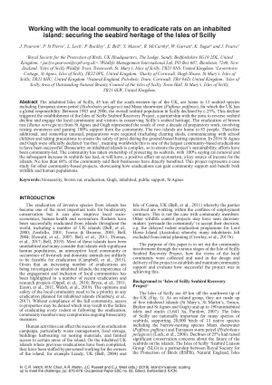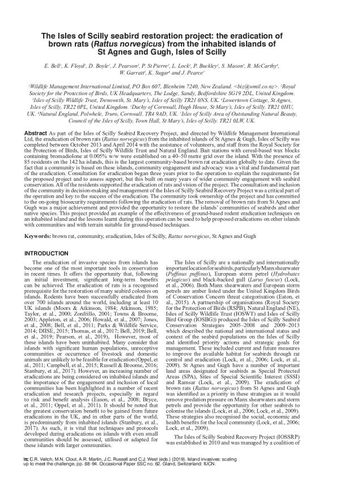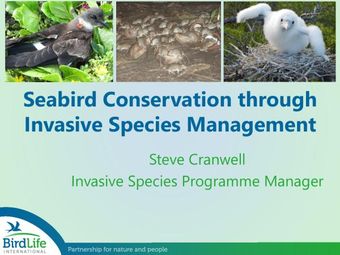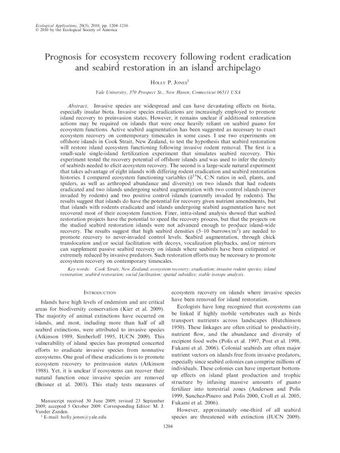Working with the local community to eradicate rats on an inhabited island: securing the seabird heritage of the Isles of Scilly
- Description:
- The inhabited Isles of Scilly, 45 km off the south-western tip of the UK, are home to 13 seabird species including European storm petrel (Hydrobates pelagicus) and Manx shearwater (Puffinus puffinus), for which the UK has a global responsibility. Between 1983 and 2006, the overall seabird population in Scilly declined by c.25%. This decline triggered the establishment of the Isles of Scilly Seabird Recovery Project, a partnership with the aims to reverse seabird decline and engage the local community and visitors in conserving Scillys seabird heritage. The eradication of brown rats (Rattus norvegicus) from St Agnes and Gugh represented the result of over a decade of preparatory work, involving raising awareness and gaining 100% support from the community. The two islands are home to 85 people. Therefore additional, and somewhat unusual, preparations were required (including clearing sheds, communicating with school children and taking precautions to ensure the safety of pets) during the ground-based baiting operation. In 2016 St Agnes and Gugh were officially declared rat-free, meaning worldwide this is one of the largest community-based eradications to have been successful. Biosecurity on inhabited islands is complex, so to ensure the projects sustainability, eff orts have been community-led. The community has taken ownership of protecting its seabirds, with 100% saying rat removal and the subsequent increase in seabirds has had, or will have, a positive effect on ecotourism, a key source of income for the islands. No less than 68% of the community said their businesses have directly benefited. This project represents a case study for other community-based projects, showcasing how eradications can gain community support and benefit both wildlife and human populations.
- Display date:
- 2019
- Collections:
- Secretariat of the Pacific Regional Environment Programme (SPREP)
- Publisher:
- International Union for Nature Conservation (IUCN)
- Content partner:
- Secretariat of the Pacific Regional Environment Programme (SPREP)
- Availability:
- Not specified
-
Copyright status: All rights reservedFind out more about what you are able to do with this itemThis item is all rights reserved, with means you'll have to get permission from Secretariat of the Pacific Regional Environment Programme (SPREP) before using it. For more information, please see our use and reuse page.What can I do with this item?Non-infringing useNZ copyright law does not prevent every use of a copyright work, and this item may be hosted by an international institute or organisation. You should consider what you can and cannot do with a copyright work.No sharingYou may not copy and/or share this item with others without further permission. This includes posting it on your blog, using it in a presentation, or any other public use.No modifyingYou are not allowed to adapt or remix this item into any other works.No commercial useYou may not use this item commercially.
Related items
Welcome and warm Pasifik greetings
The information on this site has been gathered from our content partners.
The names, terms, and labels that we present on the site may contain images or voices of deceased persons and may also reflect the bias, norms, and perspective of the period of time in which they were created. We accept that these may not be appropriate today.
If you have any concerns or questions about an item, please contact us.



